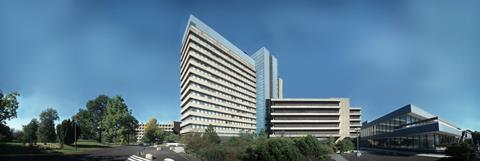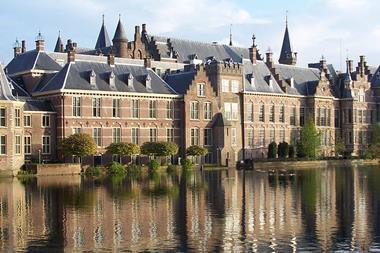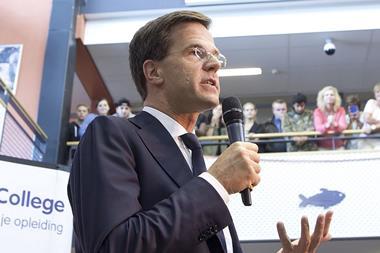The funding levels of the two largest pension schemes in the Netherlands fell below 90% in August, further increasing the likelihood of early cuts to pension payments and accrued benefits.
The €431bn civil service scheme ABP saw its coverage ratio fall to 88.6% by the end of last month, while the funding level of the €217bn healthcare pension fund PFZW dipped to 89.8%.
The decline meant that funding of both schemes dropped further below the “critical coverage ratio” – set at 95% for ABP and 94% for PFZW – below which they cannot recover to full funding within a 10-year period.
As a consequence, they must reduce pensions to improve their coverage ratios to the critical level through a single cut implemented next year.
Based on the situation at August-end, this means that ABP and PFZW will have to apply unconditional discounts of 6.7% and 4.5%, respectively, in 2020.
PMT (€77bn) and PME (€50bn) were already facing pension cuts next year, as at the end of 2019 their coverage ratios had been short of the required minimum of 104.3% for five consecutive years.
At August-end, PMT’s coverage ratio was 92.6% and PME’s was 91.5%. This was still short of the new minimum required level of 100%, set by the cabinet in June as part of the pensions agreement.
The metal sector schemes, however, are allowed to spread their cuts – 7.4% for PMT and 8.5% for PME, based on the current figures – over a 10-year period.
ABP and PFZW, which both fell into underfunded positions one year later than the metal schemes, must restore any remaining funding gap between the “critical coverage ratio” and the minimum required level of 100% in 2021.
However, while the schemes must take action immediately to address the gap to the critical level, further reductions in pension payments to reach 100% funding can be spread over 10 years.
ABP said that pension cuts in 2020 were becoming “increasingly probable” due to worsening market conditions. It singled out falling interest rates as the main cause for cuts, as interest rates had a much bigger impact on its coverage ratio than achieved returns.

Contribution increase wiped out by interest rate fall
Meanwhile, Jos Brocken, employee chairman of PMT, said a recent decision by the social partners to raise the contribution level by 5.8% to almost 28% had almost been undone by collapsing interest rates.
Last week, employers and unions decided to make the 5.8% part of the premium for early retirement (VPL) available to improve PMT’s funding level. The contribution will not be required to fund early retirements as of 2021.
However, the additional contribution would become available no sooner than 2021.
As the social partners also insisted on keeping the annual accrual at the maximum tax-facilitated level of 1.875%, this would mean that PMT’s funding was likely to deteriorate further.
Brocken said that the pension fund wanted to agree on a new contribution rate for a three-year period, and that the question was whether the increased premium would be sufficient for 2021 and 2022.
The chairman added that a cost-covering contribution would have to be approximately 35%. “In my opinion, this is impossible,” he said.












No comments yet